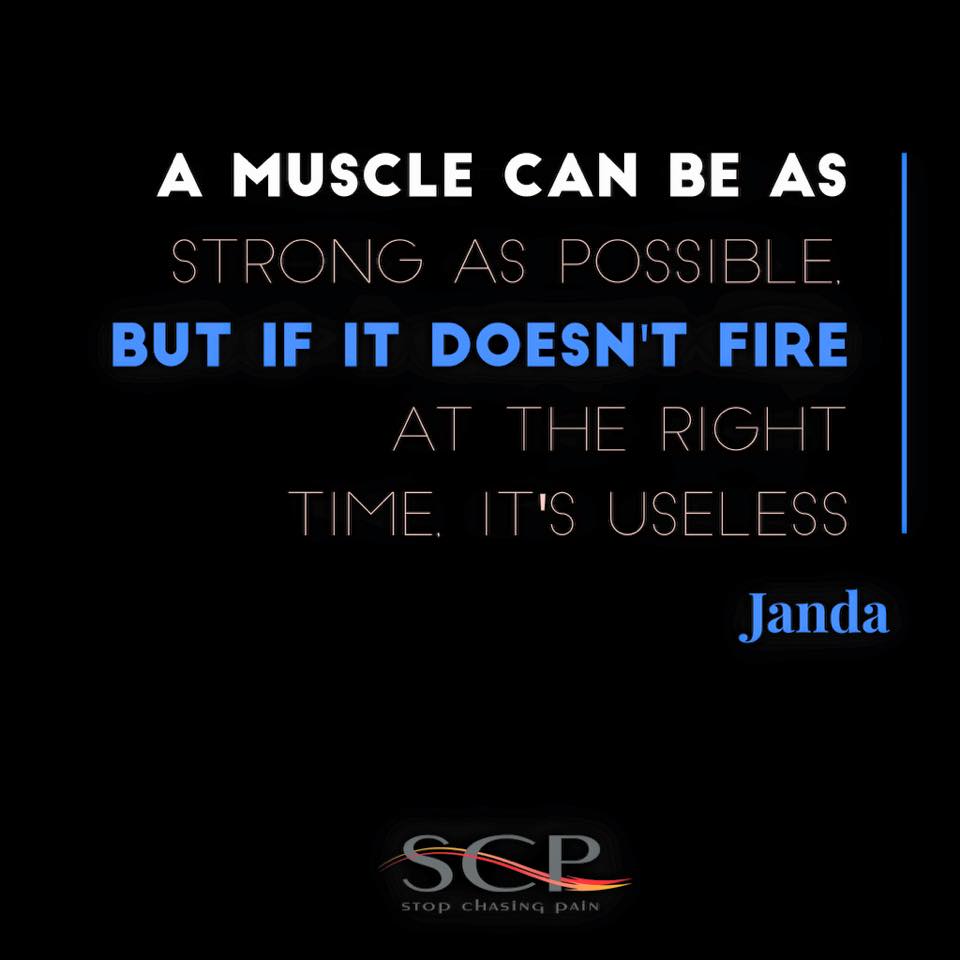Patients often come into the clinic with pain in some joint, whether it is spine, knee, hip, shoulder, etc though they haven’t done anything out of the ordinary. Their daily routine, workouts, chores have been the same, yet they woke up with something hurting and it just won’t go away.
Evaluation by a therapist helps determine the tissue that is injured or effected, but why did it become inflamed, strained, pinched, irritated is always the question. As part of an examination a physical therapist will assess for issues contributing to pain and will sometimes find joints that are not moving well, tissues that are short or inflexible, weakness in muscles often the stabilizing muscles of joints. However, very often the underlying cause of onset of pain is poor motor control.
Motor control is the therapist way of saying your are not moving optimally. The muscles may be strong, but they are not coordinated. Lack of coordination in activating muscles leads to increased stress on joints or tissues that are providing the stability. Poor motor control is a hard and frustrating idea for patients to swallow. They’ve been living in their body for “x” number of years and didn’t have a problem with how they were moving. But, we often develop changes in how we hold ourselves or stabilize to get a task done without any conscious awareness that the change is occurring.
Changes in muscle recruitment patterns are challenging; it is changing your brain, not your muscle capacity that you are changing. Thinking of changing muscle capacity is easy.
- More weight, more reps = more strength
- Longer runs, increased demands on breathing = more cardiovascular capacity
- More agility training, more plyometrics = more power output during sports
More of the same pattern in this case, will continue to create more problems. This is often the missing link in physical therapy treatments. We treat the tissue that is injured, but not the reason it got that way.
Re-learning movement patterns and changing things that have been habits for years or your whole life takes specific guidance by therapists and a great deal of focus by the patient. Though it takes patience when trying to change habits, the pay off is so huge. Patients tell us all the time how they feel different and workouts feel more beneficial once they learn to recruit muscles that were not helping optimally. We often hear about relief of physical ailments that the patients didn’t even walk through door to discuss or ever mention, maybe never noticed, until it was no longer there. The “I’ve had tight hamstrings my whole life” is a prime example. Often those hamstrings are working overtime because something is not working as it should.
Your therapist should be talking to you about motor control and movement patterns. You should be doing exercises that you have not done before and your therapist should have you thinking and understanding how your body is moving differently. Strong muscles do not mean optimally performing muscles.
